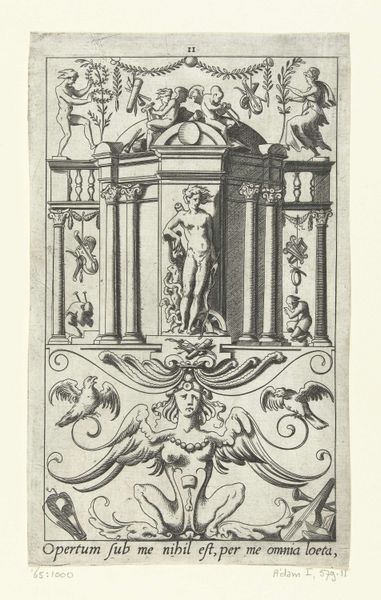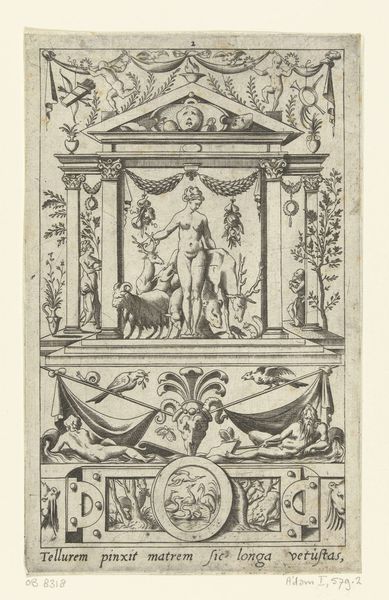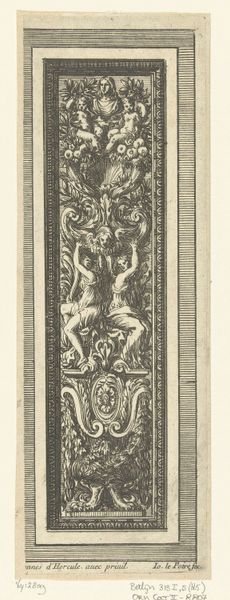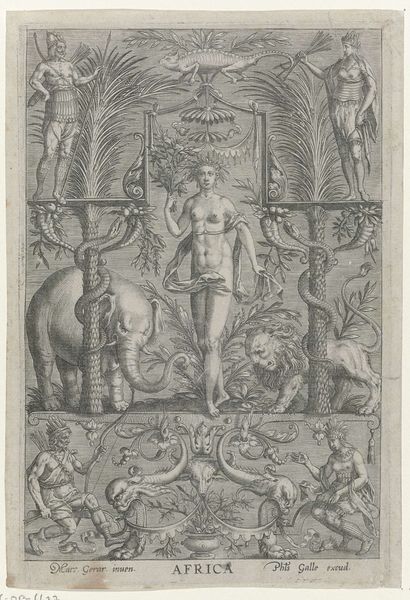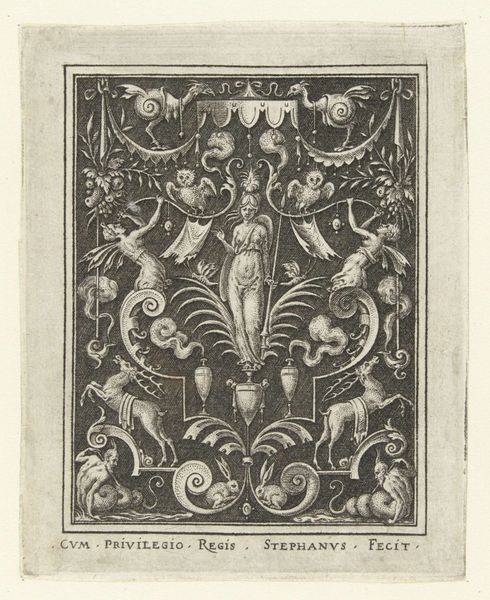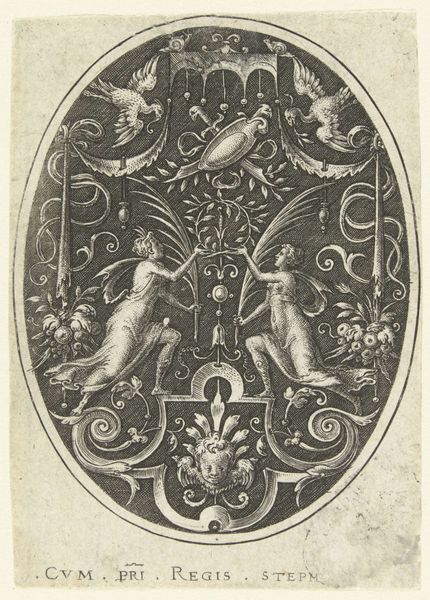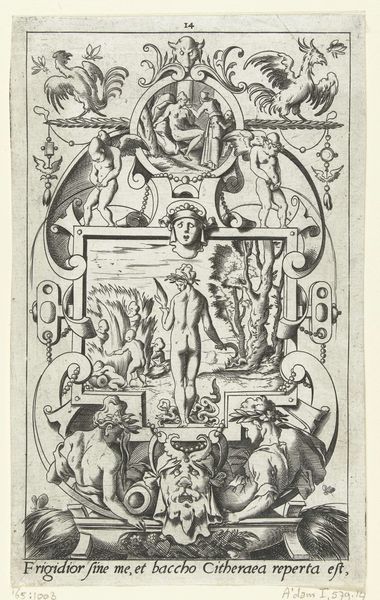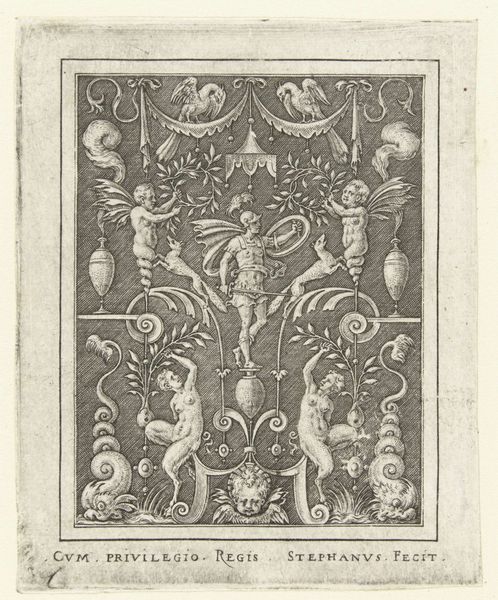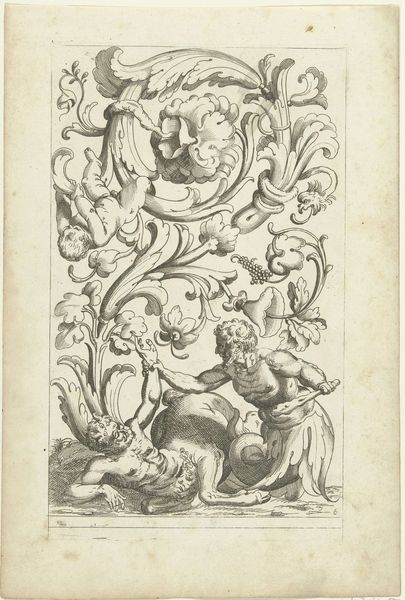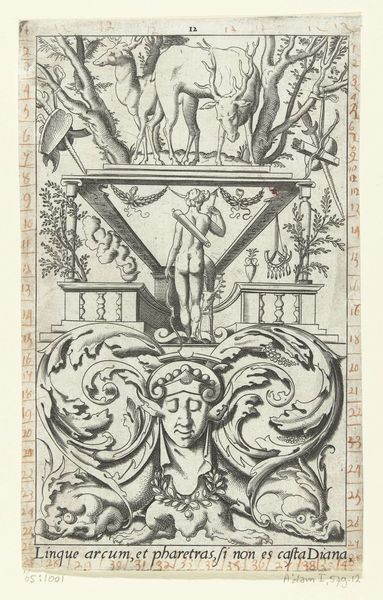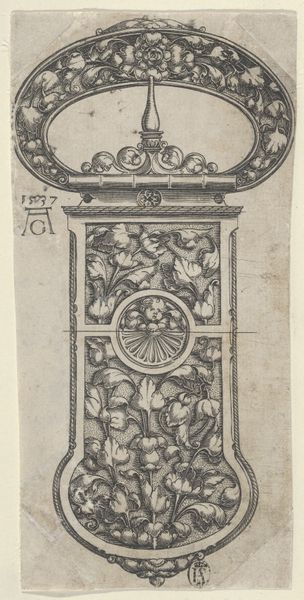
A Satyr Holding a Violin, from Twelve Ornamental Panels 1490 - 1515
0:00
0:00
drawing, ornament, print, engraving
#
drawing
#
ornament
# print
#
figuration
#
men
#
italian-renaissance
#
engraving
Dimensions: Sheet: 21 15/16 × 3 11/16 in. (55.7 × 9.3 cm) Plate: 21 7/16 × 3 7/16 in. (54.5 × 8.8 cm)
Copyright: Public Domain
Editor: This is "A Satyr Holding a Violin, from Twelve Ornamental Panels," a print made by Giovanni Antonio da Brescia between 1490 and 1515. The intricate detail is remarkable. What can you tell me about the context of an image like this? Curator: It's crucial to look at this print through the lens of Renaissance humanism and its complex relationship with classical antiquity. How do you see the figure of the satyr functioning within that context, especially considering its connection to music and festivity? Editor: Well, he seems a little bit out of place – there is an unsettling, uncanny quality, mixing classical imagery with a somewhat unsettling depiction of this half-human creature. Curator: Exactly. Brescia is pulling at something vital here: the tensions inherent in the Renaissance project. While celebrating classical forms and narratives, artists also grapple with the "otherness" embodied by figures like the satyr. How might the satyr figure trouble notions of idealized beauty or order that were so central to the Renaissance? Editor: I hadn't really thought about the challenging of ideals. Is it possible that through depicting this hybrid creature, there's some social commentary related to class or identity? Curator: Precisely! These images offered commentary on social hierarchies. Ornament prints also democratized access to art and ideas. Consider where these images would be circulated and consumed. Editor: This really expands my understanding – seeing it as not just decorative, but carrying these layers of meaning and accessibility! Curator: Absolutely. Analyzing images like this, forces us to question the assumed cultural values that shaped artistic production. The image serves not only as a decoration, but also functions as a symbol deeply rooted in intersectional dialogues involving identity, gender, class and race in that historical moment.
Comments
No comments
Be the first to comment and join the conversation on the ultimate creative platform.
